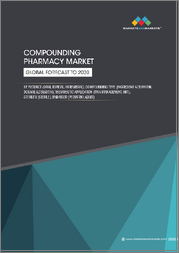
|
시장보고서
상품코드
1830504
통증 관리 치료 시장 : 약제 클래스별, 투여 경로별, 적응증별, 유통 채널별, 최종사용자별 - 세계 예측(2025-2032년)Pain Management Therapeutics Market by Drug Class, Route Of Administration, Indication, Distribution Channel, End User - Global Forecast 2025-2032 |
||||||
통증 관리 치료 시장은 2032년까지 연평균 복합 성장률(CAGR) 4.89%로 1,267억 5,000만 달러에 이를 것으로 예측됩니다.
| 주요 시장 통계 | |
|---|---|
| 기준 연도 : 2024년 | 865억 1,000만 달러 |
| 추정 연도 : 2025년 | 906억 7,000만 달러 |
| 예측 연도 : 2032년 | 1,267억 5,000만 달러 |
| CAGR(%) | 4.89% |
빠르게 변화하는 임상, 규제, 상업적 환경은 통증 치료를 재구성하고 있으며, 근거에 기반한 이해관계자 협력 전략이 필요합니다.
통증 관리 치료를 둘러싼 환경은 임상 혁신, 규제 환경의 재조정, 이해관계자의 기대치 변화에 따라 다차원적으로 빠르게 진화하고 있습니다. 약리학의 발전, 오피오이드 관리의 중요성, 비약리학적 보조 약물의 가속화로 인해 임상의가 이용할 수 있는 치료 툴킷이 전반적으로 확대되고 있습니다. 그 결과, 치료 패러다임은 획일적인 만능 요법에서 유효성, 안전성, 기능적 결과를 우선시하는 보다 개별화된 멀티모달 접근법으로 전환되고 있습니다.
동시에, 지불자와 의료 제공업체의 프레임워크는 금액 기준 진료, 결과 측정, 비용 억제에 점점 더 중점을 두고 있습니다. 이러한 환경은 제품 개발자와 서비스 제공업체에게 임상적 유용성뿐만 아니라 실제 효과와 경제적 가치를 입증해야 하는 과제를 안겨주고 있습니다. 규제 당국은 오피오이드 배합에 대한 모니터링 강화, 특정 보조요법에 대한 관리 강화, 임상 평가지표에 대한 명확한 지침 등을 통해 대응하고 있습니다.
상업적 관점에서 시장 진출 전략은 통합 의료 제공 네트워크, 외래수술센터(ASC), 재택치료 제공업체, 디지털 건강 플랫폼 등 보다 세분화된 이해관계자에 대응해야 합니다. 이러한 상황에서 임상적 근거 창출과 실용적인 전개 모델, 이해관계자 중심의 가치 제안을 동시에 제공하는 기업이 진료 경로에 영향을 미치고 지속적인 채택을 확보하는 데 가장 유리한 위치를 점할 수 있을 것으로 보입니다.
멀티모달 임상 실습, 디지털 치료, 탄력적인 공급망이 융합되어 치료 패러다임을 재구성하고 채택 경로를 가속화합니다.
최근 의료 환경 전반에 걸쳐 통증에 대한 치료, 측정, 관리 방법이 재정의되고 있습니다. 임상적으로, 약리학적 치료와 비약리학적 치료를 결합하여 오피오이드에 대한 노출을 줄이면서 결과를 개선하는 복합적 진통이 받아들여지고 있습니다. 이러한 변화는 오피오이드 과의존의 장기적인 유해성에 대한 새로운 증거와 대체 약물 및 경로 준수에 대한 인센티브를 제공하는 지불자 정책으로 인해 더욱 강화되고 있습니다.
기술 혁신도 상황을 바꾸고 있습니다. 디지털 치료, 원격 모니터링, 웨어러블 센서, 원격 의료를 활용한 통증 관리 프로그램을 통해 환자 보고 결과의 지속적인 평가가 가능해지고, 치료법의 점진적 증가가 더 빠르게 이루어지고 있습니다. 이와 함께, 지속형 주사제, 경피흡수형 시스템 등 약물 전달의 발전으로 지속형 진통제의 선택 폭이 넓어지고 순응도 프로파일이 개선되고 있습니다.
세계적인 혼란으로 인해 조달과 생산의 취약성이 부각되면서 공급망과 제조의 탄력성이 전략적 우선순위가 되고 있습니다. 따라서 기업들은 지역 실적을 재검토하고, 공급업체 기반을 다양화하며, 미래의 충격을 완화하기 위해 온쇼어 역량에 투자하고 있습니다. 이러한 재편은 실용적인 엔드포인트, 등록의 분산화, 환자 중심 측정에 중점을 둔 임상시험 설계로의 전환과 병행하여 이루어지고 있으며, 이는 증거 창출과 실제 임상에서의 채택을 가속화하고 있습니다.
관세로 인한 공급망 재조정, 니어쇼어링 이니셔티브, 지불자의 비용 우려로 인해 산업 전반의 운영 우선순위와 전략적 투자가 재편되고 있습니다.
2025년 관세 및 관련 무역 조치가 발동됨에 따라 통증 치료 관련 이해관계자들은 업무적, 전략적으로 새로운 고려사항을 도입해야 합니다. 세계화된 공급망에 의존하는 제조업체의 경우, 관세와 관련된 비용 상승으로 인해 조달 결정, 투입물 대체, 제조 발자국에 대한 면밀한 재평가가 필요하게 되었습니다. 많은 경우, 기업들은 재고 버퍼를 늘리거나, 중요한 부품을 저비용의 대체 조달 국가로 옮기거나, 관세 변동에 대한 노출을 줄이기 위해 니어쇼어링 이니셔티브에 투자하는 방식으로 대응했습니다.
이러한 업무 조정은 제품 개발 일정과 상업 전략에도 부차적인 영향을 미쳤습니다. 기업들은 첨단 전달 시스템, 원자재 가격 변동에 영향을 덜 받는 장치와 약물의 조합 등 탄력성과 차별화된 가치를 제공하는 투자를 우선적으로 고려했습니다. 유통업체 및 지불업체와의 계약 협상에서 관세 완화 조항과 패스스루(pass-through) 구조가 일상적으로 포함되고 있으며, 이는 가격 책정 논의와 상환 협상에 영향을 미치고 있습니다.
임상적 차원에서 관세 환경은 비용 효율적인 치료 옵션의 중요성을 강화하고, 고가의 서비스 이용을 실증적으로 감소시키는 치료법에 대한 지불자의 관심을 가속화했습니다. 그 결과, 토탈 코스트 오브 케어(Total Cost of Care)의 장점을 입증할 수 있는 기업이나 통합 서비스 모델을 제공하는 기업이 협상에서 우위를 점할 수 있게 되었습니다. 전반적으로, 관세 상황은 운영의 민첩성과 공급망 투명성을 산업 참여자의 핵심 경쟁력으로 끌어올렸습니다.
다차원적 세분화 프레임워크는 약물 클래스, 전달 모드, 적응증, 유통 채널, 최종 사용자 상황을 통합하여 타겟팅할 수 있는 기회를 파악할 수 있습니다.
통증 치료의 임상적 기회와 상업적 견인력이 교차하는 지점을 이해하기 위해서는 미묘한 세분화 렌즈가 필수적입니다. 약물 유형별로는 진통보조제, 국소마취제, 신경병증성 통증치료제, 비스테로이드성 항염증제, 오피오이드가 있으며, 신경병증성 통증치료제는 항경련제와 항우울제로, 비스테로이드제는 Cox-2 억제제와 기존 NSAIDs로, 오피오이드는 강압 오피오이드와 약압 오피오이드로 나뉩니다. 각 약제군별로 각각 다른 효능, 안전성, 규제 프로파일을 나타내며, 이는 배합자의 선호도를 형성하고 상환을 고려합니다.
목차
제1장 서문
제2장 조사 방법
제3장 주요 요약
제4장 시장 개요
제5장 시장 인사이트
제6장 미국 관세의 누적 영향 2025
제7장 AI의 누적 영향 2025
제8장 통증 관리 치료 시장 : 약제 클래스별
- 보조 진통제
- 국소 마취제
- 신경장애성 통증 치료
- 항경련제
- 항우울제
- 비스테로이드성 항염증제
- COX-2 억제제
- 기존 NSAIDs
- 오피오이드
- Strong Opioids
- Weak Opioids
제9장 통증 관리 치료 시장 : 투여 경로별
- 경구
- 비경구
- 근육내
- 정맥내
- 피하
- 국소
- 경피
제10장 통증 관리 치료 시장 : 적응증별
- 급성 통증
- 암 통증
- 만성 통증
- 요통
- 신경장애성 만성 통증
- 골관절염
- 류마티스 관절염
- 염증성 통증
- 신경장애성 통증
제11장 통증 관리 치료 시장 : 유통 채널별
- 오프라인
- 온라인
제12장 통증 관리 치료 시장 : 최종사용자별
- 외래수술센터(ASC)
- 홈케어
- 정신적 치료
- 환자 자택
- 병원
- 사립 병원
- 공립 병원
제13장 통증 관리 치료 시장 : 지역별
- 아메리카
- 북미
- 라틴아메리카
- 유럽, 중동 및 아프리카
- 유럽
- 중동
- 아프리카
- 아시아태평양
제14장 통증 관리 치료 시장 : 그룹별
- ASEAN
- GCC
- EU
- BRICS
- G7
- NATO
제15장 통증 관리 치료 시장 : 국가별
- 미국
- 캐나다
- 멕시코
- 브라질
- 영국
- 독일
- 프랑스
- 러시아
- 이탈리아
- 스페인
- 중국
- 인도
- 일본
- 호주
- 한국
제16장 경쟁 구도
- 시장 점유율 분석, 2024년
- FPNV 포지셔닝 매트릭스, 2024년
- 경쟁 분석
- Johnson & Johnson
- Pfizer Inc.
- Novartis AG
- Bayer AG
- GlaxoSmithKline plc
- Sanofi S.A.
- Teva Pharmaceutical Industries Ltd.
- Endo International plc
- Mallinckrodt plc
- AstraZeneca plc
The Pain Management Therapeutics Market is projected to grow by USD 126.75 billion at a CAGR of 4.89% by 2032.
| KEY MARKET STATISTICS | |
|---|---|
| Base Year [2024] | USD 86.51 billion |
| Estimated Year [2025] | USD 90.67 billion |
| Forecast Year [2032] | USD 126.75 billion |
| CAGR (%) | 4.89% |
A rapidly evolving clinical, regulatory, and commercial environment reshapes pain therapeutics and requires evidence-driven, stakeholder-aligned strategies
The pain management therapeutics landscape is undergoing a rapid, multi-dimensional evolution driven by clinical innovation, regulatory recalibration, and shifting stakeholder expectations. Advances in pharmacology, greater emphasis on opioid stewardship, and the acceleration of nonpharmacologic adjuncts have collectively broadened the therapeutic toolkit available to clinicians. As a result, treatment paradigms are moving away from one-size-fits-all regimens toward more individualized, multimodal approaches that prioritize efficacy, safety, and functional outcomes.
Simultaneously, payer and provider frameworks are increasingly focused on value-based care, outcome measurement, and cost containment. This environment compels product developers and service providers to substantiate not only clinical benefits but also real-world effectiveness and economic value. Regulatory bodies are responding with enhanced oversight of opioid prescribing, tighter controls around certain adjuvant therapies, and clearer guidance on clinical endpoints.
From a commercial perspective, market access strategies must now accommodate a more fragmented set of stakeholders, including integrated delivery networks, ambulatory surgery centers, home care providers, and digital health platforms. In this context, companies that align clinical evidence generation with pragmatic deployment models and stakeholder-specific value propositions will be best positioned to influence care pathways and gain durable adoption.
Multimodal clinical practices, digital therapeutics, and resilient supply chains converge to reshape treatment paradigms and accelerate adoption pathways
Recent years have seen several transformative shifts that are redefining how pain is treated, measured, and managed across care settings. Clinically, there is growing acceptance of multimodal analgesia that combines pharmacologic and nonpharmacologic modalities to improve outcomes while reducing opioid exposure. This shift is reinforced by emerging evidence on the long-term harms of opioid overreliance and by payer policies that incentivize alternatives and pathway adherence.
Technological innovation is also altering the landscape. Digital therapeutics, remote monitoring, wearable sensors, and telehealth-enabled pain management programs are enabling continuous assessment of patient-reported outcomes and facilitating more responsive titration of therapies. In parallel, advances in drug delivery, including long-acting injectables and transdermal systems, are expanding options for sustained analgesia with improved adherence profiles.
Supply chain and manufacturing resilience have become strategic priorities after global disruptions highlighted vulnerabilities in sourcing and production. Companies are therefore reassessing geographic footprints, diversifying supplier bases, and investing in onshore capabilities to mitigate future shocks. This realignment is occurring alongside a shift in clinical trial design that emphasizes pragmatic endpoints, decentralized enrollment, and patient-centric measures, which together accelerate evidence generation and adoption in real-world practice.
Tariff-induced supply chain recalibration, nearshoring initiatives, and payer cost-concerns reshaped operational priorities and strategic investments across the industry
The imposition of tariffs and related trade measures in 2025 introduced a new set of operational and strategic considerations for stakeholders across the pain therapeutics continuum. For manufacturers that rely on globalized supply chains, tariff-related cost increases have prompted granular re-evaluations of sourcing decisions, input substitution, and manufacturing footprints. In many cases, companies responded by increasing inventory buffers, shifting critical components to alternative, lower-cost sourcing countries, or investing in nearshoring initiatives to reduce exposure to tariff volatility.
These operational adjustments have had secondary effects on product development timelines and commercial strategies. Firms prioritized investments that offered resilience or differentiated value, such as advanced delivery systems or device-drug combinations less vulnerable to commodity price swings. Contract negotiations with distributors and payers now routinely include tariff mitigation clauses and pass-through mechanics, which has influenced pricing discussions and reimbursement negotiations.
At the clinical level, the tariff environment reinforced the importance of cost-effective therapeutic options and accelerated payer interest in therapies that deliver demonstrable reductions in utilization of high-cost services. As a result, companies that can evidence total cost of care benefits or that offer integrated service models gained negotiating leverage. Overall, the tariff context has elevated operational agility and supply chain transparency into core competitive capabilities for industry participants.
A multi-dimensional segmentation framework integrates drug classes, delivery modes, indications, distribution channels, and end-user contexts to reveal targeted opportunities
A nuanced segmentation lens is essential for understanding where clinical opportunity and commercial traction intersect in the pain therapeutics space. Based on drug class, the field spans adjuvant analgesics, local anesthetics, neuropathic pain agents, nonsteroidal anti-inflammatory drugs, and opioids, with the neuropathic pain agents further divided into anticonvulsants and antidepressants, the nonsteroidal category bifurcated into Cox-2 inhibitors and traditional NSAIDs, and the opioid class separated into strong and weak opioids. Each drug-class subsegment exhibits distinct efficacy, safety, and regulatory profiles that shape prescriber preference and reimbursement considerations.
Based on route of administration, therapeutic delivery channels include oral, parenteral, topical, and transdermal options, while the parenteral route itself is differentiated across intramuscular, intravenous, and subcutaneous modalities. Delivery format influences adherence, onset of action, and suitability for ambulatory versus inpatient settings, and it informs the design of clinical trials and real-world evidence programs.
Based on indication, the therapeutic landscape covers acute pain, cancer pain, chronic pain, inflammatory pain, and neuropathic pain, with chronic pain further dissected into low back pain, neuropathic chronic pain, osteoarthritis, and rheumatoid arthritis. Indication-specific outcomes, patient-reported measures, and comorbidity profiles dictate both clinical development priorities and commercialization tactics.
Based on distribution channel, products reach patients through offline and online pathways, with digital pharmacies and telehealth-enabled dispensing changing access dynamics. Finally, based on end user, the marketplace serves ambulatory surgical centers, home care settings, and hospitals, with home care settings subdivided into hospice care and patient home, and hospitals separated into private and public institutions. These end-user distinctions determine procurement cycles, formulary decisions, and required supporting services, and they influence the optimal commercial model for launch and scale.
Regional payer structures, regulatory diversity, and care delivery models create distinct commercial pathways across the Americas, Europe Middle East & Africa, and Asia-Pacific
Regional dynamics exert a powerful influence on product strategy, regulatory pathways, and commercialization approaches within pain management therapeutics. The Americas continue to exhibit advanced adoption of opioid stewardship policies, widespread integration of multimodal perioperative programs, and significant private payer influence on coverage and reimbursement decisions, creating an environment where demonstrable real-world outcomes and economic value resonate strongly with purchasers.
In Europe, Middle East & Africa, regulatory heterogeneity and diverse payer architectures require adaptable market access strategies and local evidence generation to support formulary inclusion. Reimbursement rules in several jurisdictions emphasize conservative use of high-cost interventions and favor established nonpharmacologic care pathways, prompting companies to design localized value dossiers and to pursue partnerships with regional health systems.
Across Asia-Pacific, rapid uptake of innovative delivery platforms, expanding ambulatory care infrastructure, and growing investment in home-based services are fostering new channels for distribution and patient engagement. The region also presents opportunities to leverage manufacturing scale and cost efficiencies, though companies must navigate varied regulatory timelines and local clinical practice patterns. Together, these regional contours demand differentiated go-to-market blueprints that align clinical evidence, pricing strategies, and stakeholder engagement to regional payer and provider realities.
A collaborative competitive landscape where pharmaceutical incumbents, specialty innovators, device partners, and digital entrants converge to create integrated therapeutic solutions
Competitive dynamics in the pain therapeutics domain are defined by a mix of legacy pharmaceutical players, specialty developers, device manufacturers, and digital health entrants, each bringing different strengths to market. Incumbent pharmaceutical companies leverage broad commercialization networks, established relationships with payers and providers, and deep clinical trial expertise, but they face pressure to innovate beyond traditional opioid-centric portfolios.
Specialized innovators focus on novel mechanisms of action, advanced delivery systems, and combination product strategies that seek to differentiate on efficacy, safety, or convenience. These firms often pursue strategic alliances with device makers or digital health firms to create integrated solutions that support adherence and remote monitoring. Device manufacturers are increasingly partnering with pharmaceutical developers to co-develop drug-device combinations that extend patent life and improve therapeutic precision.
Digital health companies are introducing behavioral therapies, remote monitoring, and AI-enabled pain-tracking tools that complement pharmacologic regimens and provide meaningful patient-reported outcome data. Collaboration, rather than pure competition, is emerging as a sustainable model; alliances between large manufacturers and agile disruptors enable acceleration of time-to-market while de-risking innovation. Overall, companies that combine robust clinical evidence, differentiated delivery, and clear value propositions for payers and providers are most likely to sustain commercial momentum.
Actionable strategies to strengthen evidence generation, supply chain resilience, integrated product design, and tailored market access for sustained competitive advantage
Industry leaders seeking to navigate the current pain therapeutics environment should pursue evidence-led, stakeholder-centric strategies that align clinical development with commercial imperatives. First, prioritize generation of pragmatic real-world evidence and patient-centered outcomes that demonstrate functional improvement and reductions in downstream resource utilization, thereby meeting the dual needs of clinicians and payers. Align study designs with the endpoints that matter to health systems to accelerate formulary acceptance and clinical adoption.
Second, diversify supply chains and consider onshoring or regional manufacturing to reduce exposure to tariff and trade volatility while ensuring consistent product availability. Transparency in supplier relationships and proactive inventory management will strengthen contracting positions with large health systems. Third, invest in hybrid product models that pair pharmacologic therapies with digital tools or device components to improve adherence, enable remote titration, and produce richer longitudinal data for value demonstration.
Fourth, tailor market access approaches to regional payer architectures and care delivery models, building localized value dossiers and forming partnerships with provider networks for pilot deployments. Finally, cultivate cross-sector collaborations and licensing arrangements to share development risk and accelerate commercialization capacity, focusing on segments where differentiated clinical benefits and durable reimbursement pathways are plausible.
A rigorous mixed-methods research approach combining expert interviews, literature synthesis, and triangulated analyses to validate strategic insights and implications
This report synthesizes insights derived from a mixed-methods research framework combining primary and secondary approaches to ensure robust, triangulated findings. Primary inputs include structured interviews with clinical thought leaders, payers, hospital procurement executives, and commercial leaders, as well as advisory panel discussions that validated key thematic trends. These qualitative inputs were complemented by an extensive review of peer-reviewed literature, regulatory guidance, clinical trial registries, technology white papers, and public policy statements to construct an up-to-date evidence base.
Analytical methods included thematic coding of expert interviews to identify recurring strategic priorities, scenario mapping to explore potential operational responses to tariff shifts, and comparative analysis across delivery formats and indications to surface niche opportunities. The segmentation framework was validated through cross-referencing procurement practices and formulary policies across hospital, ambulatory, and home care settings. Limitations of the methodology include the evolving nature of regulatory guidance and the variability of regional reimbursement rules, which were addressed by including time-bound caveats and by recommending continuous surveillance for policy changes.
Throughout, data integrity was prioritized via source triangulation and expert validation to ensure that conclusions reflect a balanced and pragmatic view of the industry landscape.
Conclusive synthesis emphasizing evidence-driven differentiation, adaptive commercial models, and collaborative innovation to secure long-term adoption and value realization
In summary, the pain management therapeutics landscape is at an inflection point characterized by clinical innovation, heightened regulatory scrutiny, and a stronger emphasis on value. The shift toward multimodal care, the rise of digital and device-enabled adjuncts, and the need for resilient supply chains have together created a more complex but opportunity-rich environment for product developers and service providers. Success will depend on the ability to generate meaningful real-world evidence, to craft compelling value propositions for diverse payers, and to deploy adaptive commercial models that reflect regional care delivery realities.
Companies that embrace collaborative development models, prioritize patient-centric outcomes, and invest in operational flexibility will be better positioned to capture opportunity and mitigate risk. The implications extend across the product lifecycle, from clinical development and regulatory strategy to manufacturing and post-market support. Ultimately, the landscape rewards organizations that can translate clinical differentiation into demonstrable improvements in patient function and health system performance, thereby securing sustainable adoption and long-term relevance.
Table of Contents
1. Preface
- 1.1. Objectives of the Study
- 1.2. Market Segmentation & Coverage
- 1.3. Years Considered for the Study
- 1.4. Currency & Pricing
- 1.5. Language
- 1.6. Stakeholders
2. Research Methodology
3. Executive Summary
4. Market Overview
5. Market Insights
- 5.1. Rapid adoption of virtual reality based therapies for chronic neuropathic pain management
- 5.2. Integration of wearable biosensing patches for continuous postoperative pain monitoring
- 5.3. Development of personalized gene therapy approaches targeting inflammatory pain pathways
- 5.4. Increasing use of digital health platforms to deliver cognitive behavioral therapy for pain
- 5.5. Growth in minimally invasive focused ultrasound applications for musculoskeletal pain relief
- 5.6. Surge in approval of long acting non opioid injectable formulations for osteoarthritis pain
- 5.7. Emergence of cannabinoid receptor modulators designed for targeted neuropathic pain alleviation
6. Cumulative Impact of United States Tariffs 2025
7. Cumulative Impact of Artificial Intelligence 2025
8. Pain Management Therapeutics Market, by Drug Class
- 8.1. Adjuvant Analgesics
- 8.2. Local Anesthetics
- 8.3. Neuropathic Pain Agents
- 8.3.1. Anticonvulsants
- 8.3.2. Antidepressants
- 8.4. Nonsteroidal Anti-Inflammatory Drugs
- 8.4.1. Cox-2 Inhibitors
- 8.4.2. Traditional NsaiDs
- 8.5. Opioids
- 8.5.1. Strong Opioids
- 8.5.2. Weak Opioids
9. Pain Management Therapeutics Market, by Route Of Administration
- 9.1. Oral
- 9.2. Parenteral
- 9.2.1. Intramuscular
- 9.2.2. Intravenous
- 9.2.3. Subcutaneous
- 9.3. Topical
- 9.4. Transdermal
10. Pain Management Therapeutics Market, by Indication
- 10.1. Acute Pain
- 10.2. Cancer Pain
- 10.3. Chronic Pain
- 10.3.1. Low Back Pain
- 10.3.2. Neuropathic Chronic Pain
- 10.3.3. Osteoarthritis
- 10.3.4. Rheumatoid Arthritis
- 10.4. Inflammatory Pain
- 10.5. Neuropathic Pain
11. Pain Management Therapeutics Market, by Distribution Channel
- 11.1. Offline
- 11.2. Online
12. Pain Management Therapeutics Market, by End User
- 12.1. Ambulatory Surgical Centers
- 12.2. Home Care Settings
- 12.2.1. Hospice Care
- 12.2.2. Patient Home
- 12.3. Hospitals
- 12.3.1. Private Hospitals
- 12.3.2. Public Hospitals
13. Pain Management Therapeutics Market, by Region
- 13.1. Americas
- 13.1.1. North America
- 13.1.2. Latin America
- 13.2. Europe, Middle East & Africa
- 13.2.1. Europe
- 13.2.2. Middle East
- 13.2.3. Africa
- 13.3. Asia-Pacific
14. Pain Management Therapeutics Market, by Group
- 14.1. ASEAN
- 14.2. GCC
- 14.3. European Union
- 14.4. BRICS
- 14.5. G7
- 14.6. NATO
15. Pain Management Therapeutics Market, by Country
- 15.1. United States
- 15.2. Canada
- 15.3. Mexico
- 15.4. Brazil
- 15.5. United Kingdom
- 15.6. Germany
- 15.7. France
- 15.8. Russia
- 15.9. Italy
- 15.10. Spain
- 15.11. China
- 15.12. India
- 15.13. Japan
- 15.14. Australia
- 15.15. South Korea
16. Competitive Landscape
- 16.1. Market Share Analysis, 2024
- 16.2. FPNV Positioning Matrix, 2024
- 16.3. Competitive Analysis
- 16.3.1. Johnson & Johnson
- 16.3.2. Pfizer Inc.
- 16.3.3. Novartis AG
- 16.3.4. Bayer AG
- 16.3.5. GlaxoSmithKline plc
- 16.3.6. Sanofi S.A.
- 16.3.7. Teva Pharmaceutical Industries Ltd.
- 16.3.8. Endo International plc
- 16.3.9. Mallinckrodt plc
- 16.3.10. AstraZeneca plc



















